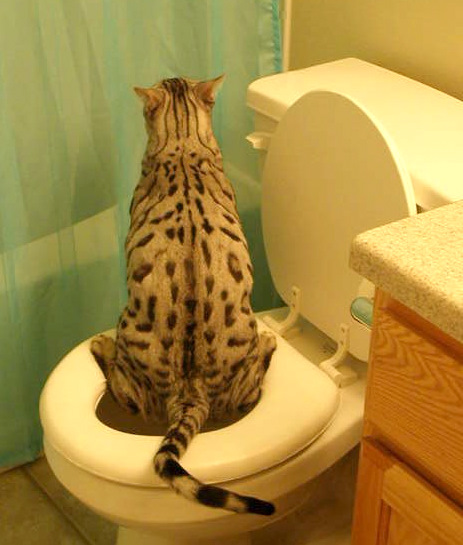The Dangers of Flushing Cat Poop Down Your Toilet - Advice for Better Disposal
The Dangers of Flushing Cat Poop Down Your Toilet - Advice for Better Disposal
Blog Article
Just how do you actually feel about Can You Flush Cat Poo or Litter Down the Toilet??

Intro
As pet cat proprietors, it's necessary to be mindful of exactly how we take care of our feline buddies' waste. While it may appear convenient to purge pet cat poop down the commode, this technique can have detrimental consequences for both the setting and human health and wellness.
Alternatives to Flushing
The good news is, there are more secure and more accountable methods to take care of feline poop. Think about the following choices:
1. Scoop and Dispose in Trash
The most typical method of throwing away pet cat poop is to scoop it into a naturally degradable bag and throw it in the trash. Make certain to make use of a devoted clutter scoop and throw away the waste quickly.
2. Use Biodegradable Litter
Opt for naturally degradable cat trash made from materials such as corn or wheat. These trashes are eco-friendly and can be safely taken care of in the garbage.
3. Hide in the Yard
If you have a lawn, take into consideration burying feline waste in a marked location far from vegetable gardens and water sources. Be sure to dig deep sufficient to avoid contamination of groundwater.
4. Set Up a Pet Waste Disposal System
Purchase a pet dog garbage disposal system especially made for pet cat waste. These systems utilize enzymes to break down the waste, minimizing odor and environmental impact.
Health Risks
Along with ecological issues, flushing pet cat waste can likewise position health threats to people. Cat feces might include Toxoplasma gondii, a parasite that can trigger toxoplasmosis-- a potentially extreme disease, particularly for expecting women and individuals with damaged immune systems.
Ecological Impact
Flushing feline poop introduces dangerous pathogens and parasites right into the supply of water, positioning a significant danger to marine communities. These contaminants can negatively impact aquatic life and compromise water high quality.
Verdict
Responsible animal ownership prolongs beyond supplying food and sanctuary-- it additionally includes proper waste administration. By avoiding flushing cat poop down the toilet and opting for alternative disposal approaches, we can minimize our environmental impact and safeguard human wellness.
Why Can’t I Flush Cat Poop?
It Spreads a Parasite
Cats are frequently infected with a parasite called toxoplasma gondii. The parasite causes an infection called toxoplasmosis. It is usually harmless to cats. The parasite only uses cat poop as a host for its eggs. Otherwise, the cat’s immune system usually keeps the infection at low enough levels to maintain its own health. But it does not stop the develop of eggs. These eggs are tiny and surprisingly tough. They may survive for a year before they begin to grow. But that’s the problem.
Our wastewater system is not designed to deal with toxoplasmosis eggs. Instead, most eggs will flush from your toilet into sewers and wastewater management plants. After the sewage is treated for many other harmful things in it, it is typically released into local rivers, lakes, or oceans. Here, the toxoplasmosis eggs can find new hosts, including starfish, crabs, otters, and many other wildlife. For many, this is a significant risk to their health. Toxoplasmosis can also end up infecting water sources that are important for agriculture, which means our deer, pigs, and sheep can get infected too.
Is There Risk to Humans?
There can be a risk to human life from flushing cat poop down the toilet. If you do so, the parasites from your cat’s poop can end up in shellfish, game animals, or livestock. If this meat is then served raw or undercooked, the people who eat it can get sick.
In fact, according to the CDC, 40 million people in the United States are infected with toxoplasma gondii. They get it from exposure to infected seafood, or from some kind of cat poop contamination, like drinking from a stream that is contaminated or touching anything that has come into contact with cat poop. That includes just cleaning a cat litter box.
Most people who get infected with these parasites will not develop any symptoms. However, for pregnant women or for those with compromised immune systems, the parasite can cause severe health problems.
How to Handle Cat Poop
The best way to handle cat poop is actually to clean the box more often. The eggs that the parasite sheds will not become active until one to five days after the cat poops. That means that if you clean daily, you’re much less likely to come into direct contact with infectious eggs.
That said, always dispose of cat poop in the garbage and not down the toilet. Wash your hands before and after you clean the litter box, and bring the bag of poop right outside to your garbage bins.
https://trenchlesssolutionsusa.com/why-cant-i-flush-cat-poop/

I'm certainly very curious about Don’t flush cat feces down the toilet and I really hope you appreciated the blog posting. Do you know another individual who is interested in the subject? Do not hesitate to share it. Thanks for your time spent reading it.
Estimating Report this page